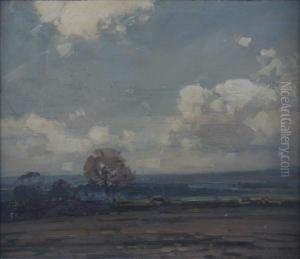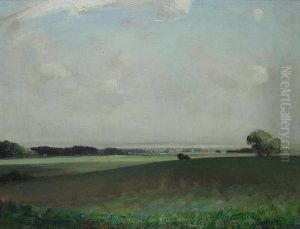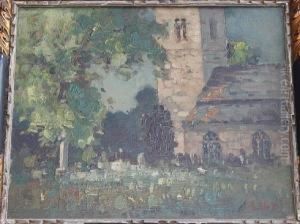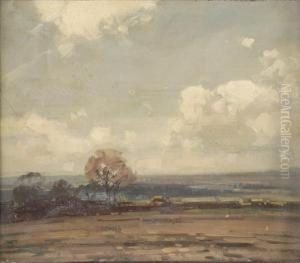Herbert Rollett Paintings
Herbert Rollett was an Austrian landscape painter, born on August 11, 1871, in Vienna, Austria. He was part of the late 19th and early 20th-century European art scene, which was characterized by a variety of movements including Impressionism, Expressionism, and the Secessionist movements that were prominent in Vienna at the time.
Rollett's work is primarily known for its depiction of the Austrian countryside. He was particularly fascinated with the regions of Tyrol and the Dolomites, where he spent much time painting en plein air, capturing the unique lighting and the natural beauty of the Alpine landscapes. His style was marked by a vibrant palette and a fluid, impressionistic brushwork that sought to capture the atmospheric and transient effects of light on the natural environment.
During his lifetime, Herbert Rollett was associated with the Hagenbund, which was a group of Austrian artists who sought to break away from the traditional art institutions and promote modern artistic expressions. The group was founded in 1900 and was named after the Hagen brothers, who were prominent figures in the Viennese art world at the time. Rollett's association with the Hagenbund allowed him to exhibit his works alongside other progressive artists of the period.
Despite being less well-known today compared to some of his contemporaries, Rollett's paintings remain a testament to the allure of the Austrian landscape in the eyes of early 20th-century artists. His works can be found in various Austrian museums, and they continue to be appreciated by those interested in the country's artistic heritage.
Herbert Rollett passed away on July 20, 1952, in Absam, Tyrol, leaving behind a legacy of landscape paintings that continue to be celebrated for their contribution to the Austrian art history. His dedication to capturing the essence of the Austrian Alps and his ability to convey the mood and atmosphere of the regions he painted have ensured that his work is still studied and enjoyed by art enthusiasts and historians alike.




